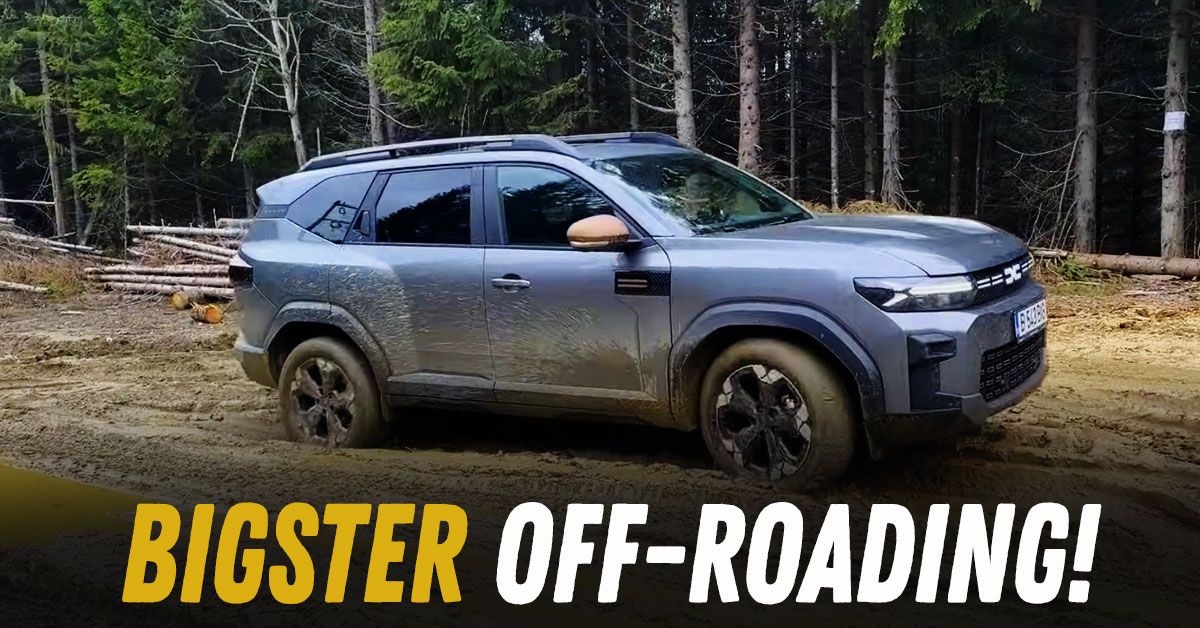Close Look At The 7-seater Duster's Performance On Mud Roads [Video]


It was recently that Renault announced the name for its upcoming 7-seater guise of the Duster. The SUV- essentially based on the Dacia Bigster sold abroad, will be called the 'Boreal' upon launch. With time still left for the manufacturer to let out details of the production-spec, much buzz is building around the Boreal. For the curious, here's a video that would give you a quick look at how the Boreal could perform on terrains. A video shared on the channel 'Duster Cool Travels' shows the Dacia Bigster being driven through slush and tricky mud roads.
The vehicle shown here is the 4x4 variant of Bigster. It is riding on 215/60 R18 all-season tyres from Continental. The video shows it to drive through various low-traction surfaces- meadows, slush and mud. The SUV performs well and drives without slipping or stopping much. The Bigster is just 80-odd kilos heavier than the Duster, and thus doesn't fall behind in terms of off-road performance. The design, however, poses a unique challenge. Compared to the Duster, it has lower (read meeker) approach and departure angles. These slightly affect the off-road performance.
The later parts of the video also shows the 4x2 version of the Bigster shod with Kumho winter tyres being tested. It is evident that even the 4x2 variant isn't a huge compromise in terms of off-roading abilities. Since it featured larger 19-inch wheels, the ground clearance gets a slight boost.
From the outside, the Bigster looks a lot like the new Duster. The Y-shaped LED DRLs, tail lamps, and styling cues are carried over. It has the same width but is slightly taller and longer than the Duster, giving it a more commanding road presence. At the rear, it proudly displays the Bigster badge along with a hybrid logo.
The Bigster comes with three engine options. The most powerful is a 1.8-litre, 4-cylinder hybrid petrol engine that produces 155 PS. There's also a 1.2-litre, 3-cylinder petrol with mild hybrid tech that delivers 140 PS. An LPG version is also available in global markets.
Some variants come with AWD, but this feature is unlikely to be offered in India. Instead, we may only get the strong hybrid version, which is more fuel-efficient than the regular petrol models.
Globally, the Bigster is a 5-seater SUV. But Renault is expected to tweak the India-spec version to offer three rows of seating. This makes sense, as the 5-seater segment is already crowded in India, and a larger 7-seater SUV could appeal to families looking for more space.
Inside, the vehicle feels familiar to (the new) Duster owners. It features the same Y-shaped design elements and a driver-focused dashboard. The global-spec offers a 10-inch touchscreen infotainment system and a 7-inch digital instrument cluster. Other features include a panoramic sunroof, wireless phone charging, and a raised centre console for the automatic variant.
When it comes to performance, the Bigster feels more refined than the Duster. Ride quality has been improved, power delivery is smooth, and the hybrid engine doesn’t feel strained. The automatic transmission also feels better tuned in this SUV.
Though it isn’t a very fast car, it can go from 0 to 100 km/h in under 10 seconds. It also gets Adaptive Cruise Control, a first for a Dacia SUV. With its strong hybrid tech, bigger size, and a long list of features, it is expected to attract buyers looking for a premium feel at an affordable price.
The Boreal is expected to launch in India after the arrival of the new Renault Duster. It will stand close to the Bigster on multiple grounds. If priced right, it could become a solid contender in the 7-seater SUV segment.